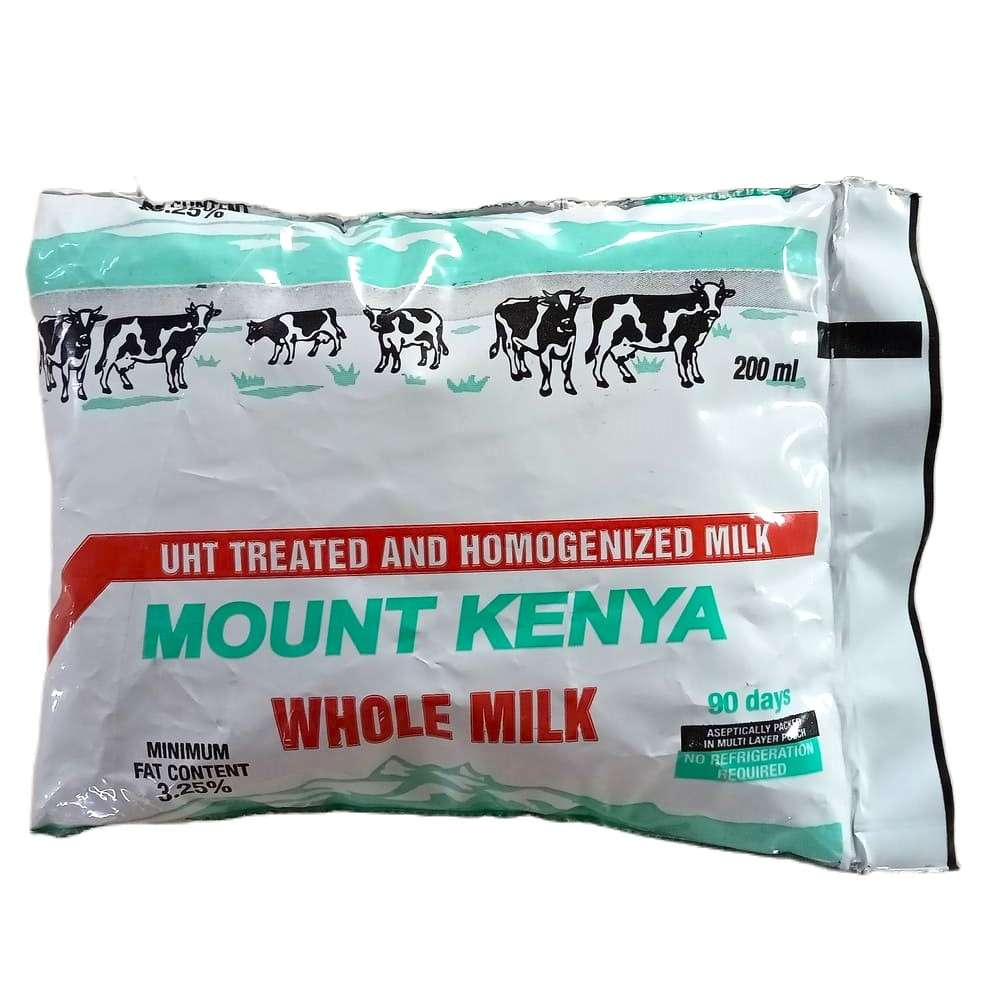Milk is considered to be the ‘ideal food’ because of its abundant nutrients required by both infants and adults. It is one of the best sources for protein, fat, carbohydrate, vitamin and minerals.
Unfortunately milk is being very easily adulterated throughout the world and Kenya is no exception, with a recent exposéé on Meru Central Co-operative Daily Union, Processors of the Mount Kenya Milk, revealing how widespread the vice is.
Possible reasons behind it may include- demand and supply gap, perishable nature of milk, low purchasing capability of customer and lack of suitable detection tests. The motivation for food fraud is economic, but the impact is a real public health concern.
Adulterants in milk mainly include addition of vegetable protein, milk from different species, addition of whey and watering which are known as economically motivated adulteration. These adulterations do not pose any severe health risk. However, some adulterants are too harmful to be overlooked.
Some of the major adulterants in milk having serious adverse health effect are urea, formalin, detergents, ammonium sulphate, boric acid, caustic soda, benzoic acid, salicylic acid, hydrogen peroxide, sugars and melamine.
Common parameters that are checked to evaluate milk quality are- fat percentage, SNF (Solid-not-Fat) percentage, protein content and freezing point. Adulterants are added in milk to increase these parameters, thereby increasing the milk quality in dishonest way. For example, cane sugar, starch, sulfate salts, urea and common salts are added to increase solid-not-fat (SNF).
Of the 801 samples of the Mount Kenya milk collected from Supermarkets and shops in Nairobi, Meru, Makutano, Embu, Kirinyaga, Nakuru, Laikipia and Mombasa, 622 were deemed unfit for consumption upon testing and found to contain traces of some of these harmful chemical compounds.
Some of these adulterants are said to cause severe health problems such as cancer, renal failure, stunted growth in children, impact on reproduction, gastrointestinal irritation with nausea, vomiting and diarrhoea.
The study, found that neutralisers were the main adulterant and almost all samples were adulterated with these. They are added to prevent curdling, thus increasing the shelf life. These could be added in the form of caustic soda, sodium bicarbonate and sodium carbonate.
What should worry the authorities is that excessive amount of neutralisers like carbonates and bicarbonates disrupt hormonal signals and affect growth of children.
According to the Experts, some of the Adulterants are added for the following reasons : commercial urea is added to milk to increase non-protein nitrogen content. Similarly, melamine is added to increase protein content falsely. Ammonium sulphate is added to increase the lactometer reading by maintaining the density of diluted milk.
Formalin, Salicylic acid, Benzoic acid and Hydrogen peroxide act as preservatives and increase the shelf life of the milk.
Since milk fat is very expensive, some manufacturers of milk and dairy products remove milk fat for additional financial gain and compensate it by adding non-milk fat such as vegetable oil. Detergents are added to emulsify and dissolve the oil in water giving a frothy solution, which is the desired characteristics of milk.
Unfortunately, some of the adulterants have severe health impact, sometimes in the long run.
The ingestion of melamine at levels above the safety limit can induce renal failure and death in infants. Both peroxides and detergents in milk can cause gastro-intestinal complications, which can lead to gastritis and inflammation of the intestine. Excessive starch in the milk can cause diarrhea due to the effects of undigested starch in colon, however, accumulated starch in the body may prove very fatal for diabetic patients. Urea in milk overburdens the kidneys as they have to filter out more urea content from the body. In addition, carbonate and bicarbonates might cause disruption in hormone signaling that regulate development and reproduction.
Although financial gain is considered to be one of the major reasons for milk adulteration, inadequate supply for the increasing has paved the ground for this as well. This problem is more acute in the developing countries like Kenya due to lack of adequate monitoring and law enforcement.
Existing common detection techniques are not always convenient and accessible making it difficult to address the diverse ways of fraudulent adulteration in milk. Is Mount Kenya Milk safe for consumption? That's for you to decide.
Meanwhile, This calls for combined efforts from scientific communities and the regulatory authorities through the development, implementation and dissemination of better techniques for the detection of milk adulteration.







